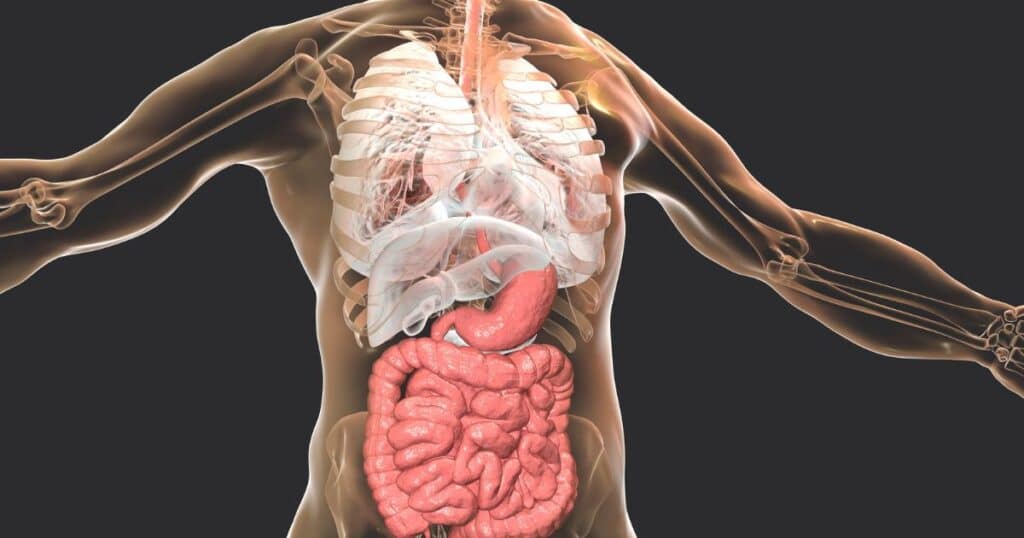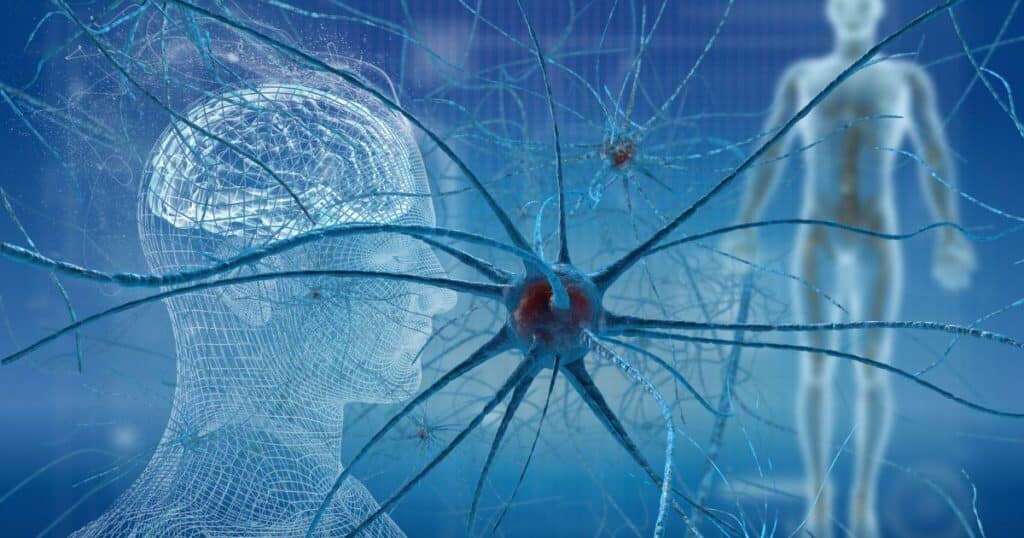The endocannabinoid system (ECS) is a vital part of the human body that helps maintain homeostasis, which is a state of balance or equilibrium within the body. This system consists of various molecules and receptors that detects changes in the environment and help regulate physiological functions such as sleep, appetite, mood, memory, reproduction, and pain perception.
When these components see an imbalance or change in our environment, they activate certain pathways to restore balance. Endocannabinoids are molecules produced naturally by our bodies that act as messengers between these different pathways.
Cannabis has been known for its medicinal and therapeutic properties since ancient times. Still, it wasn’t until the last 30 years that researchers began to identify and understand the relationship between cannabis and endocannabinoid.

In 1988, Dr. Allyn Howlett and her team of researchers at St. Louis University first discovered the cannabinoid receptor, which is a type of protein found in cells that bind with cannabinoids like those produced naturally by our bodies or from plants such as cannabis.
Cannabinoid receptors were discovered because researchers tried to understand how phytocannabinoids like THC and CBD interact with the body. So they have named cannabinoid receptors after the main chemicals that activate them — cannabinoids.
Scientists later discovered that the body produces very similar molecules that fit the same receptors. They were named endocannabinoids.
Among the functions regulated by the endocannabinoid system (ECS) are memory, appetite, body temperature, the immune system, sleep, pain, and the female reproductive system.
The endocannabinoid system is believed to help maintain balance, or homeostasis, in the body by regulating these functions. The ECS has even been called a master regulator of homeostasis.
This discovery helped scientists further understand how these molecules interact with the body to regulate various physiological functions. It also explains why certain compounds found in cannabis have such powerful effects on our mental and physical health when consumed.
From this discovery, more research was conducted on the endocannabinoid system with its role in maintaining homeostasis within the body. This research has led to a better understanding of how cannabis can be used medicinally and therapeutically, as well as new applications that might be developed in the future.
Endocannabinoids Produced within the Human Body
The human body produces two primary endocannabinoids, anandamide and 2-arachidonoylglycerol (2-AG). Anandamide, often referred to as the “bliss molecule,” plays a key role in regulating mood, reward response, emotion, and memory. Low levels of anandamide have been linked to depression, anxiety, and schizophrenia. On the other hand, 2-AG is largely involved in reducing inflammation while also helping to regulate other essential functions of the immune system, such as pain perception, memory formation, reproductive health, and sleep cycle regulation.

These endocannabinoids are known as lipid signals that activate specific cellular receptors like key opening locks. These “locks” are actually receptors that sit on the cells throughout the body. The two primary endocannabinoid receptors found in humans are CB1 and CB2. These receptors are activated when cannabinoids such as THC or CBD bind with them, leading to physiological changes that help restore body balance.
Receptors Involved in System Functioning
The Endocannabinoid System relies on two main types of receptors, CB1 and CB2, to help regulate physiological functions. CB1 receptors are located mainly in the brain and nervous system, while CB2 receptors are primarily found in immune cells. The main function of both types of receptors is to detect changes in the environment and activate pathways that can restore balance within the body.
CB1 receptors are essential in regulating mood, appetite, memory formation, motor control, coordination, pain perception, sleep patterns, and more. Although they are primarily found in the central nervous system, they can also be present in other organs, such as the liver or kidneys.
On the other hand, CB2 receptors are mainly involved in immune functions and inflammation. They are found in immune cells such as macrophages, B-cells, natural killer cells, and T-cells.
When cannabinoids such as THC or CBD bind to these receptors, they can cause body changes that help restore homeostasis. For example, when THC binds with CB1 receptors, it has been known to increase dopamine levels, reducing anxiety and improving mood.
Similarly, CBD binding with CB2 receptors has been linked to reducing inflammation and pain perception in the body. In short, both receptors play an essential role in maintaining balance within the human body by responding to environmental changes.
The Interaction between Cannabis and the Endocannabinoid System
The interaction between cannabis and the endocannabinoid system has been studied extensively in recent years. Cannabinoids such as THC and CBD found in cannabis have been shown to interact with the CB1 and CB2 receptors, which helps to keep the body balanced.

In addition, while many compounds found in cannabis can bind with these receptors, some have been shown to inhibit them, which may lead to increased levels of endocannabinoids within the body.
This interaction between cannabis and the ECS can also be utilized for medical purposes. For example, THC has been known to reduce inflammation, relieve pain, and improve mood. CBD has been studied for its anti-inflammatory, anticonvulsant, and neuroprotective properties. These cannabinoids can be used to treat various conditions, such as chronic pain, epilepsy, anxiety, multiple sclerosis, Alzheimer’s disease, and more.
Processes in the Human Body Regulated by the ECS
The endocannabinoid system (ECS) is a complex network of receptors, chemicals, and brain functions responsible for regulating many essential processes in the human body. These processes include cognitive functioning, memory and learning, appetite regulation, thermoregulation, immune system function, female reproductive cycles, sleep cycles, pain perception, and autonomic processes such as heart rate and digestion.
Research has uncovered how cannabinoids—chemicals found in marijuana plants and naturally occurring in the human body—can interact with the ECS to affect these processes. Cannabinoids bind to cannabinoid receptors throughout the brain and body, which act as gateways for signals impacting physiological activity. CB1 and CB2 are the primary receptors involved with ECS function, CB1 being responsible for regulating functions in the central nervous system and CB2 playing a role in immune system activity.
The ECS regulates cognitive functioning through its ability to modulate glutamate release, a neurotransmitter important for memory formation, learning, and other cognitive processes. The activation of CB1 receptors has been linked to improved short-term memory recall and protection against neuronal injury caused by oxidative stress.
The endocannabinoid system also plays an important role in appetite regulation and metabolism. It’s believed that modulating cannabinoid receptor activity is essential for processing macronutrients like fat and controlling food intake, making it instrumental in managing obesity and its associated metabolic issues.
Thermoregulation is another key area in which the ECS plays a role, with CB1 receptor activation having an important impact on body temperature. Research has revealed that THC, one of the primary cannabinoids found in cannabis, is known to reduce body temperature, leading to the common side effect of feeling cold after using cannabis.

The ECS also regulates immune system function through interactions with CB2 receptors. Scientists believe that modulating endocannabinoid activity could be a therapeutic approach for treating inflammation and autoimmune diseases such as asthma, MS, and some forms of cancer.
Endocannabinoids have been linked to female reproductive processes by playing a role in hormone production and ovulation. Proper endocannabinoid system functioning is believed to be essential for reproductive success, making it a critical piece of the puzzle regarding fertility.
The ECS also plays a role in sleep cycles by acting on CB1 receptors to induce sleep in laboratory settings. This helps explain why so many individuals report using cannabis as an aid for insomnia or other sleep disturbances.
Finally, the ECS plays an important role in pain perception by regulating nerve endings throughout the central and peripheral nervous systems through interactions with CB1 receptors. This makes cannabinoids like THC invaluable tools for managing chronic pain and reducing opioid use.
The endocannabinoid system is a complex network of chemicals, receptors, and brain functions that regulate essential processes in the human body. From cognitive functioning to immune system function, and more, it’s clear that the ECS plays an intricate role in keeping our bodies running smoothly. As cannabis research continues to expand, scientists are discovering more about how cannabinoids interact with this important system — and unlocking new potential for therapeutic applications.
In review, the endocannabinoid system is a vital part of our human body that helps maintain balance within its systems by responding to changes in our environment. This system comprises various molecules and receptors that interact with each other to help regulate physiological functions such as sleep, appetite, mood, memory, reproduction, and pain perception. With the discovery of the cannabinoid receptor with Dr. Allyn Howlett in 1988 came a better understanding of how cannabis can be used medicinally and therapeutically.
Research has further revealed that certain cannabinoids found in cannabis can bind with CB1 and CB2 receptors, increasing or decreasing endocannabinoid levels within the body. Helping to promote bodily homeostasis. This interaction has been studied extensively to develop medical applications for treating various conditions, such as chronic pain, epilepsy, anxiety, multiple sclerosis, Alzheimer’s disease, and more.
Keep updated on all the latest news and updates in the Cannabis industry here at Beard Bros Pharms by signing up for our Friday Sesh Newsletter here. Always Dank and Never Spam!
















